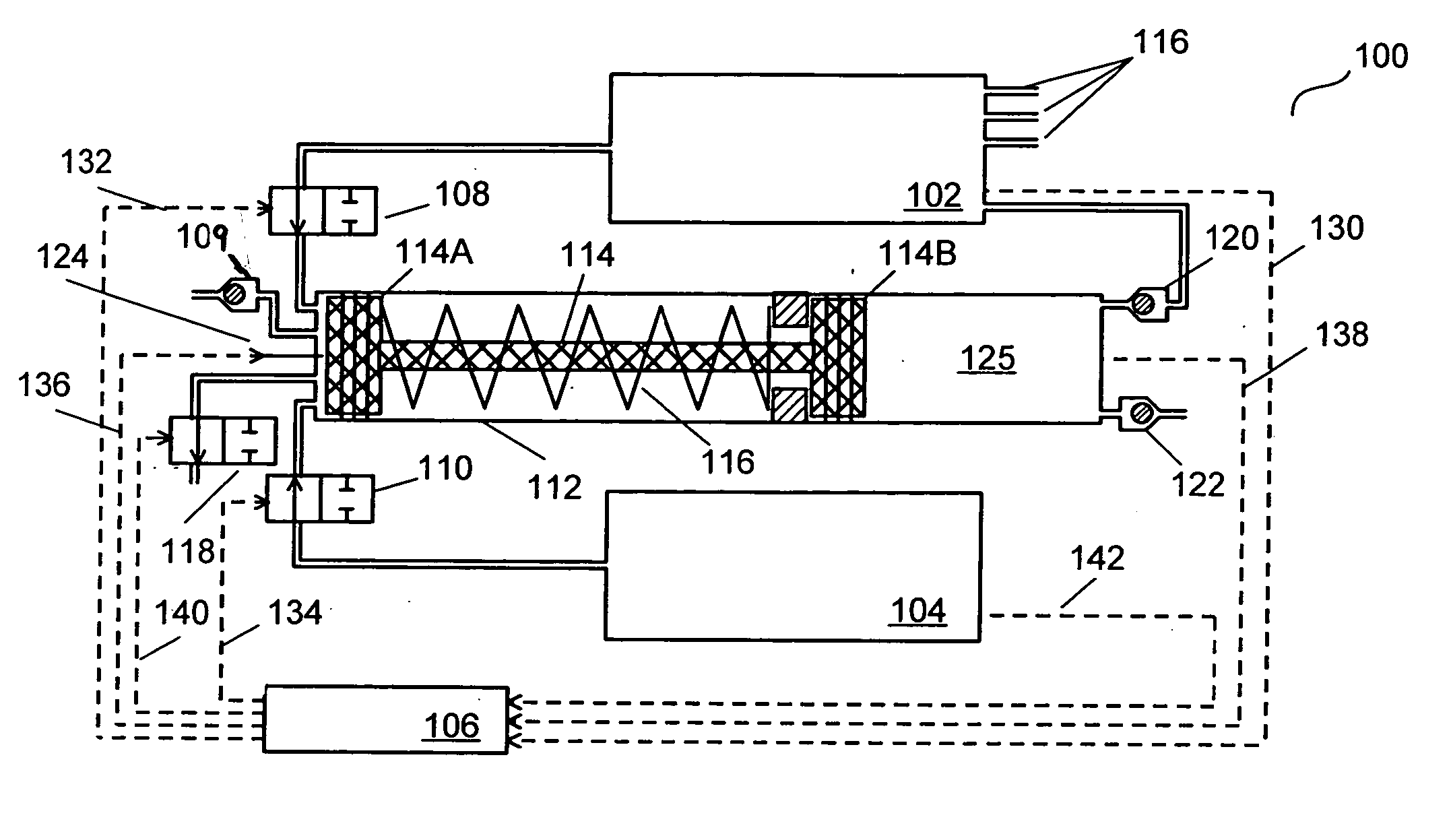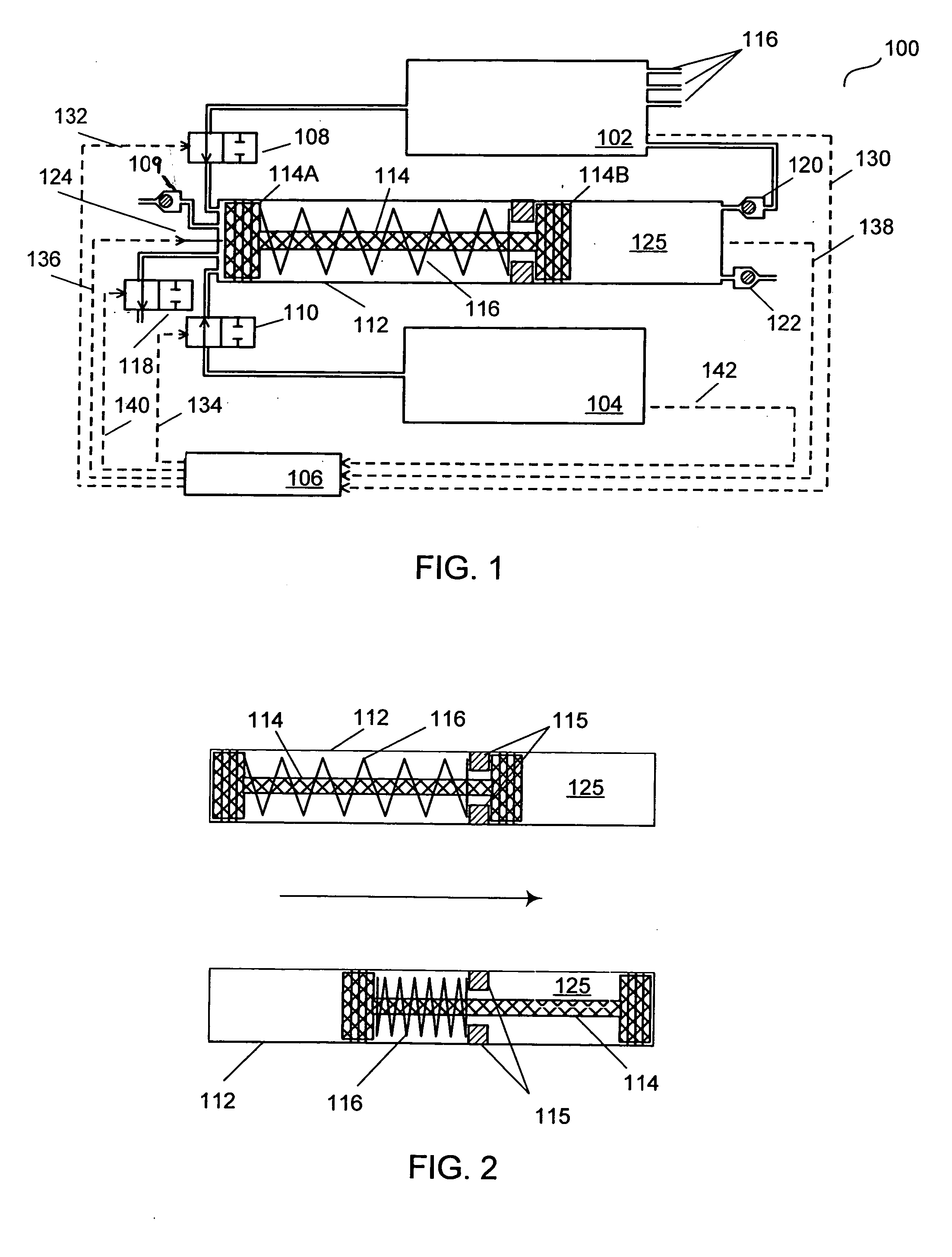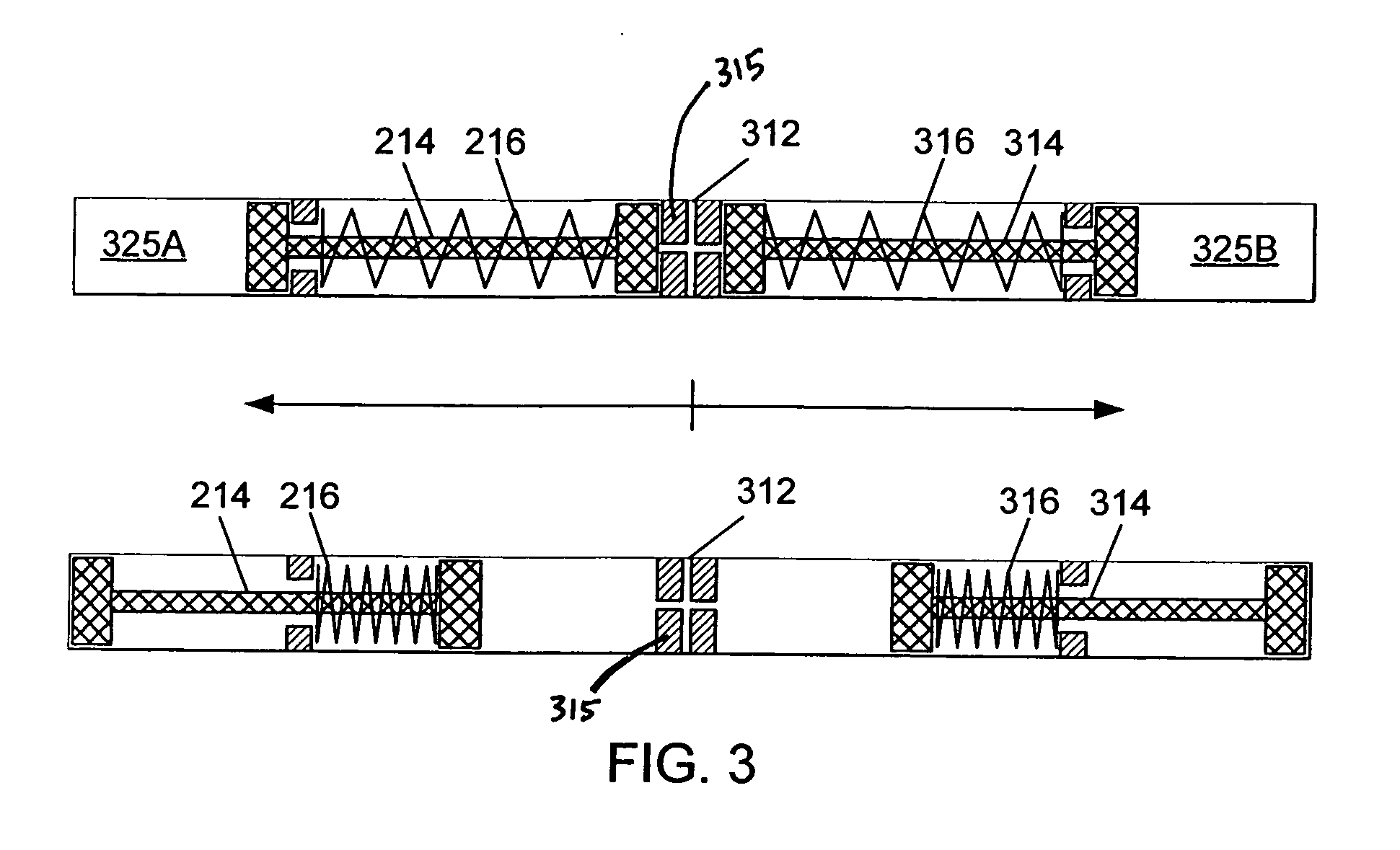[0010] In a representative but non-limiting embodiment, the invention involves an
air compressor meant as a mobile, self-contained pneumatic power supply for applications such as, but not limited to, untethered, human-scale mobile robots. Several aspects of this embodiment make it appropriate for such applications. For example, it can use conventional,
high energy-density
hydrocarbon fuels (such as
propane,
methane, CNG,
gasoline,
diesel fuel, and military fuels such as JP-8 and RP-1, among others) as a source of stored
chemical energy. It converts this
stored energy into energy stored in the form of
compressed air, which is then subsequently available for pneumatic actuation or other pneumatic-powered devices (such as air tools). The usage of common
hydrocarbon fuels makes the device appealing from practical, financial, safety, handling and logistics standpoints.
[0011] Additionally, the device is capable of surpassing the combined problems of low
energy storage and
high weight encountered with conventional robotic power supply and actuation systems, such as batteries and electric motors. This is accomplishable due to at least the following: (1) the
high energy-density of the
stored energy source (e.g.,
hydrocarbon fuels), (2) the high efficiency of the device in the conversion of chemical (fuel) to pneumatic (compressed gas)
energy storage, (3) the compact and lightweight nature of the device, and (4) the compact and lightweight nature of pneumatic actuation components and their high
mass and volume specific power-density relative to electromagnetic actuation.
[0012] The transduction from stored chemical to stored pneumatic energy may be accomplished via combustion and subsequent movement of a free-piston. The configuration of the device allows for the efficient conversion of
heat energy (released in combustion) to
kinetic energy of the free-piston. The
kinetic energy of the free piston is subsequently utilized to compress air, drawn from the surroundings, into a high-pressure storage vessel. Furthermore, the configuration allows for relatively low temperature operation (compared to other combustion-based devices) via drafting in surrounding colder air into the
combustion chamber briefly after the combustion event.
[0013] The configuration additionally allows for relatively silent operation by allowing the combustion chamber to descend to
atmospheric pressure before an exhaust port to exhaust the
combustion products. The device can utilize high-pressure
compressed air from its own high-pressure storage vessel to mix stoichiometrically with gaseous or atomized liquid hydrocarbon fuels to achieve combustion without the need for an intake
stroke. Likewise, a compression
stroke is unnecessary given its own source of high-pressure air capable of being injected under pressure into the sealed combustion chamber.
[0014] In one embodiment of the device, the use of
gaseous hydrocarbon fuels such as
propane additionally allows the injection of fuel into the combustion chamber without the use of a
fuel pump or complicated
fuel delivery system, contributing to the lightweight nature of the device appropriate for human-scale applications. The combined effects of no required intake stroke and no required compression stroke allow for the device to start and stop on-demand with no requirement to idle as with a conventional
internal combustion engine.
[0015] Additional commercial and cost appeal is realized with the device as it provides low temperature compressed gas; such a power source can be utilized through the use of standard valves and pneumatic components without the need for special considerations that other technologies may impose (such as high temperatures). The combined factors of a high-
energy density fuel, the efficiency of the device, the compactness and low weight of the device, and the use of the device to drive lightweight linear pneumatic actuators (lightweight as compared with power comparable electric motors) provides at least an
order of magnitude greater total
system (power supply and actuation)
energy density than state of the art power supply (batteries) and actuators (electric motors) appropriate for human-scale output. Embodiments of this disclosure may therefore allow for the realization of untethered, anthropomorphic humanoid robots, or mobile robots of other forms, capable of accomplishing useful amounts of work in a
human environment for useful durations of time before requiring refueling. Currently, there exists no such technology. Additionally, embodiments of this disclosure operate with
low noise and at low temperatures (compared to conventional internal combustion engines), and with no requirements for idling (operates on-demand).
 Login to View More
Login to View More  Login to View More
Login to View More 


